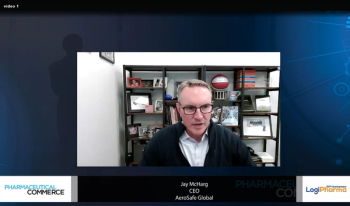
LogiPharma USA 2025: Pharma Supply Chains Evolve Toward Real-Time Visibility and End-to-End Control
At LogiPharma USA, industry leaders from Tive, McKesson, and the broader healthcare logistics community discussed the sector’s transition from passive monitoring to real-time control, the growing influence of advanced therapies, and the importance of diversity and innovation in shaping the future of pharma supply chains.
At this year’s LogiPharma USA, Pharmaceutical Commerce Editor Nico Saraceno spoke with several key opinion leaders about how technology, innovation, and inclusivity are reshaping pharmaceutical logistics.
Krenar Komoni, founder and CEO of Tive, highlighted a critical industry shift: the move from passive to real-time temperature control. While adoption has been slower than anticipated, Komoni noted that progress is accelerating, aided by new technologies. He predicted that the full transition to real-time visibility could take another 12 to 36 months, citing the challenges of scaling across global networks.
McKesson’s Ammie McAsey, SVP of supply chain operations, discussed how advanced therapies are challenging traditional distribution models. Precision medicines and individualized treatments require a new level of quality assurance and communication across stakeholders. McAsey emphasized investments in both physical infrastructure, including refrigeration, frozen, and cryogenic systems, and digital platforms that enable seamless communication between providers and manufacturers. As she explained, distributors like McKesson play a key role in bridging these operational and technological gaps.
Finally, healthcare supply chain expert Dave Malenfant reflected on LogiPharma’s evolution over the past two decades, noting the conference’s growing inclusivity and representation. Once a male-dominated space, today’s event features diverse voices and a mix of companies spanning clinical and commercial supply chain disciplines.
Together, these insights underscore a unifying theme: pharma supply chains are becoming more connected, data-driven, and people-focused than ever before.
A transcript of their conversation of their conversation can be found below.
PC: Welcome to a special edition of LogiPharma USA coverage. I’m Nico Saraceno, editor of Pharmaceutical Commerce. This year’s installment of the conference was yet another action-packed one, as I had the opportunity to speak with a variety of KOLs in the space, including Krenar Komoni, founder and CEO of Tive, who highlighted the transition in pharma from passive to real-time temperature control.
How did he do that? He noted delays in tech adoption while emphasizing how AI and automation will soon drive cost savings, improved quality, and stronger customer experience.
PC: What challenges are currently impacting the temperature-controlled space?
Komoni: So the temperature control space and all the various companies, especially in the pharmaceutical side, they're going through a transition phase, which I call it, going from passive to real time. And it's taking its time. And I wish we were there sooner, but there's a lot of reasons why we're not there yet.
Technology providers haven't moved as fast we're finally just for instance, with dive, we released a solo pro device, which is a pharma specific real time tracker that meets all the 21 CFR Part 11 requirements. It's GXP compliant. And to be able to move everything from passive to real time, it's gonna take a little bit longer time. Call it another 12 months, maybe 24 to 36 months max. But this is one of the challenges right now, is this transition, and what comes with this transition.
PC: Now when I asked Ammie McAsey, McKesson’s SVP of Supply Chain Ops, how advanced therapies are challenging traditional supply chain models, she dove into the need for end-to-end visibility among other qualities.
McAsey: Challenging the traditional supply chain model, traditional kind of pharma has been—in the distributor space—built for speed and efficiency, and while that's critically important, quality is of the utmost importance. The supply chain seems to be a little bit longer and has a lot more partners as we think about the precision medicine, and potentially one therapy for one cure and one patient.
The investment in technology to ensure end-to-end visibility and end-to-end communication is really, really important, so that's challenging the model. There are also temperature challenges, vibration challenges, multiple other scenarios that we have to account for with these specialized drugs.
How are we addressing that? Really around investments, and we have to look again across the supply chain for those investments, whether it's in refrigeration, in frozen, in cryo, or whether it's digital investments that allow for that visibility and tracking and communication between the provider, as well as the manufacturer of the drug or the therapy. You have to hit it from both angles, but I think as we sit in the middle as a distributor, we're well positioned to do both.
PC: Let us not forget Dave Malenfant, a healthcare supply chain expert, who took us through LogiPharma USA’s development over the past two decades.
Malenfant: When LogiPharma first came out, there were not a lot of women, and it was a very male dominated industry. And we've evolved where, if you notice the crowd now, a lot of women. Finally, we've got a lot of women that are coming into the industry, WBR and LogiPharma has done a really good job of trying to embrace as many different companies, small, medium, large, and in folks that are really concentrated on both the clinical side and on the commercial side of supply chain.
Newsletter
Stay ahead in the life sciences industry with Pharmaceutical Commerce, the latest news, trends, and strategies in drug distribution, commercialization, and market access.




